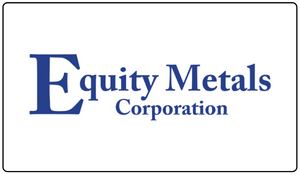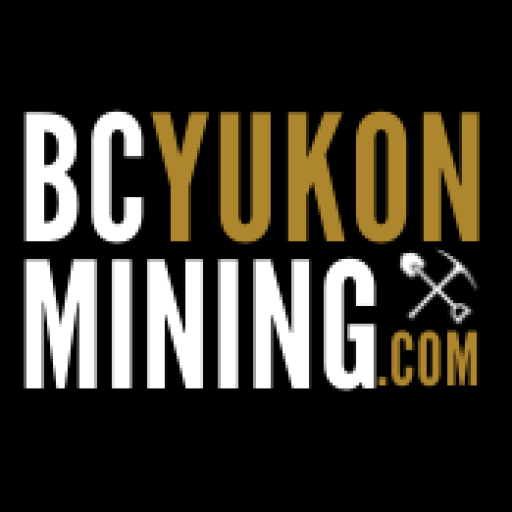Vancouver, British Columbia: FIREWEED METALS CORP. (“Fireweed” or the “Company”) (TSXV: FWZ; OTCQB: FWEDF; FSE: M0G) is pleased to report its best drill intersection from Boundary Zone to date, as well as other spectacular assay results from its 2023 exploration at the Macmillan Pass (“Macpass”) Project, Yukon, Canada.
Highlights
- Best intersection drilled to date at Boundary Zone: hole NB23-028 intersected 143.95 m (50 m true width) grading 14.45% zinc, 1.15% lead, and 60.0 g/t silver, including 28.71 m (10 m true width) grading 25.52% zinc, 1.27% lead, and 91.3 g/t silver.
- Successful step-out holes continue to increase the extents of known zinc mineralization and demonstrate the high-grade tenor of the Boundary Zone mineralization.
- Hole NB23-022 intersected 66.11 m (18 m true width) grading 7.13% zinc, 0.97% lead, and 54.8 g/t silver.
- Assays are pending for 19 remaining drillholes including six more from Boundary Zone, and 11 holes from the Tom deposit, and two holes from the Jason deposit.
CEO Statement
Brandon Macdonald, CEO, stated, “I am excited to start the year able to say that we have intersected our best-ever Boundary Zone drill intersection. We stepped out 140 m along strike from NB22-002 and NB23-007 and hit a spectacular intersection in NB23-028, further supporting our interpretation that there is a continuous high-grade feeder zone within the stratiform unit at Boundary Zone. We now have multiple wide and high-grade intersections that highlight the potential for another large zinc system within this exceptional critical minerals project.”
Summary
The mineralization from drill holes in this release primarily comprises stratiform (layer-parallel) and massive (>50% sulphides) sulphides in the western and central areas of Boundary Zone. This mineralization is sub-vertical with sharp margins, occurring from near-surface to at least a depth of 450 m and across a strike length of 550 m. Another stratiform body is present in holes NB23-029 and NB23-029D1 that requires additional drilling to accurately model. We also report intersections of vein and breccia mineralization that occur on both sides of the tabular stratiform sulphide zones. The intersection in hole NB23-028 demonstrates high zinc, lead, and silver grades that are interpreted as forming from higher temperature fluids in association with a feeder system supplying metals to a mineralized system.
Results
The drill holes in this release are located in the central and western areas of Boundary Zone and targeted the stratiform to massive sulphide body with a focus on stepping out from known feeder-style mineralization. NB23-028 intersected a broad, high-grade interval of massive sulphides rich in zinc, lead, and silver that are correlated with this interpreted feeder zone. Stratiform massive sulphides were also intersected in NB23-022 and NB23-029. Stratiform sulphides intersected in NB23-022D1, NB23-029D1 are associated with a separate zone that requires additional drilling and interpretation. Breccia and vein mineralization was also intersected in NB23-028, NB23-029, NB23-029D1 and NB23-031.
Table 1: Assay highlights for holes included within this release for the 2023 drilling program, Boundary Zone
| Drillhole | Interval | From (m) | To (m) | Interval Width (m) | Est. True Width (m) † | Zinc (%) | Lead (%) | Silver (g/t) | Bulk Density (t/m3) |
| NB23-022 | Primary | 282.65 | 348.76 | 66.11 | 18 | 7.13 | 0.97 | 54.8 | 4.47 |
| NB23-028 | Primary | 91.9 | 111.3 | 19.4 | N/A | 3.65 | 0.04 | 5.1 | 3.09 |
| NB23-028 | Including | 94.72 | 98.1 | 3.38 | N/A | 8.55 | 0.07 | 8.1 | 3.39 |
| NB23-028 | Primary | 196.1 | 203.8 | 7.7 | N/A | 9.95 | 0.04 | 12.7 | 2.86 |
| NB23-028 | Including | 197.6 | 202.3 | 4.7 | N/A | 14.23 | 0.06 | 17.9 | 2.91 |
| NB23-028 | Primary | 305.6 | 449.55 | 143.95 | 50 | 14.45 | 1.15 | 60.0 | 3.75 |
| NB23-028 | Including | 310.35 | 314.5 | 4.15 | 1.4 | 14.55 | 4.69 | 163.0 | 3.89 |
| NB23-028 | Including | 321.79 | 350.5 | 28.71 | 10 | 25.52 | 1.27 | 91.3 | 3.90 |
| NB23-028 | >Including | 327.6 | 337.74 | 10.14 | 3.5 | 32.72 | 1.34 | 109.8 | 4.06 |
| NB23-028 | Including | 420.31 | 439.61 | 19.3 | 6.7 | 19.06 | 1.12 | 62.7 | 4.00 |
| NB23-029 | Primary* | 24.14 | 51.95 | 27.81 | N/A | 4.28 | 0.06 | 11.9 | 3.08 |
| NB23-029 | Including* | 24.14 | 31.57 | 7.43 | N/A | 9.21 | 0.05 | 13.8 | 3.07 |
| NB23-029 | Primary* | 79.27 | 108.45 | 29.18 | N/A | 2.93 | 0.02 | 4.6 | 2.77 |
| NB23-029 | Primary | 238.82 | 255.44 | 16.62 | N/A | 8.74 | 0.03 | 11.1 | 3.09 |
| NB23-029 | Including | 239.82 | 245.44 | 5.62 | N/A | 18.39 | 0.06 | 23.6 | 3.49 |
| NB23-029 | Primary | 400.87 | 412.5 | 11.63 | Unknown | 7.49 | 1.66 | 34.7 | 3.14 |
| NB23-029 | Including | 402.82 | 408.38 | 5.56 | Unknown | 13.21 | 0.96 | 34.1 | 3.42 |
| NB23-029 | Primary | 514 | 519.76 | 5.76 | Unknown | 6.32 | 1.50 | 34.6 | 3.06 |
| NB23-029 | Primary | 580.43 | 618.83 | 38.4 | Unknown | 3.06 | 0.08 | 8.2 | 3.47 |
| NB23-029 | Including | 580.43 | 582.86 | 2.43 | Unknown | 11.91 | 0.36 | 26.6 | 4.39 |
| NB23-029 | Including | 601.94 | 604.88 | 2.94 | Unknown | 13.21 | 0.09 | 21.5 | 4.30 |
| NB23-029D1 | Primary | 416.75 | 437.5 | 20.75 | Unknown | 5.20 | 2.05 | 52.6 | 3.80 |
| NB23-029D1 | Including | 423.5 | 430 | 6.5 | Unknown | 8.43 | 3.27 | 82.3 | 4.17 |
| NB23-031 | Primary | 142.4 | 148.9 | 6.5 | N/A | 7.33 | 0.05 | 14.5 | 2.92 |
| NB23-031 | Primary | 235.57 | 240.16 | 4.59 | N/A | 7.33 | 0.02 | 7.7 | 3.23 |
| NB23-031 | Primary | 373.33 | 377.6 | 4.27 | N/A | 7.95 | 0.01 | 3.3 | 2.81 |
| NB23-032 | Primary | 412.55 | 430.92 | 18.37 | 8 | 4.25 | 0.14 | 12.7 | 3.27 |
| NB23-032 | Including* | 412.55 | 417 | 4.45 | 2 | 7.55 | 0.19 | 17.3 | 2.96 |
*denotes intervals with recovery of less than 85%. N/A: Not Applicable due to the variable shapes of breccia and vein mineralization.
† See “Data Verification” for a description of true width calculations
Fireweed continues to successfully intersect pyrite-sphalerite-galena as stratiform massive sulphides, laminated mineralization, veins, and breccias in the 2023 step-outs (Photos 1 to 3). Mineralization has been intersected in every step-out hole that has been completed to depth. Assays have been received for 34 Boundary Zone holes (Tables 1 and 2). Brief summaries of mineralized zones within all other 2023 holes are listed in Table 3. Summaries for new drill results reported in this news release are as follows:
- Hole NB23-028 intersected a 143.95 m interval of stratiform massive sulphide grading 14.45% zinc, 1.15% lead, and 60.0 g/t silver with an estimated true width of approximately 50 m, including 28.71 m (estimated true width 10 m) of 25.52% zinc, 1.27% lead, and 91.3 g/t silver, further including 10.14 m (estimated true width 3.5 m) of 32.72% zinc, 1.34% lead, and 109.8 g/t silver. Two intervals of vein and breccia style mineralization were also intersected, 19.40 m grading 3.65% zinc and 5.1 g/t silver, and 7.70 m grading 9.95% zinc and 12.7 g/t silver.
- Hole NB23-022 intersected 66.11 m of stratiform massive sulphide with an estimated true width of 18 m grading 7.13% zinc, 0.97% lead, and 54.8 g/t silver, including 50.08 m (14 m true width of 7.99% zinc, 1.12% lead, and 61.7 g/t silver.
- Hole NB23-29D1 is a directionally-cut secondary splay hole from NB23-029 and intersected 20.75 m of stratiform massive sulphide grading 5.20% zinc, 2.05% lead, and 52.6 g/t silver, including 6.50 m of 8.43% zinc, 3.27% lead, and 82.3 g/t silver. This intercept of stratiform mineralization correlates to a separate, distinct body from the primary tabular massive sulphide.
- NB23-029 intersected a 5.76 m interval of stratiform massive sulphide grading 6.32% zinc, 1.50% lead, and 34.6 g/t silver, as well as an 11.63 m interval of stratiform massive sulphide grading 7.49% zinc, 1.66% lead, and 34.7 g/t silver. Four intervals of vein and breccia style mineralization were also intersected: 27.81 m grading 4.28% zinc and 11.9 g/t silver; 29.18 m grading 2.93% zinc and 4.6 g/t silver; 16.62 m grading 8.74% zinc and 11.1 g/t silver; and 38.40 m grading 3.06% zinc and 8.2 g/t silver.
- Hole NB23-032 intersected 18.37 m of stratiform massive sulphide with an estimated true width of 8 m grading 4.25% zinc, 0.14% lead, and 12.7 g/t silver, including 4.45 m of 7.55% zinc, 0.19% lead, and 17.3 g/t silver with an estimated true width of 2 m.
- Hole NB23-031 intersected three zones of breccia and vein style mineralization: 6.50 m grading 7.33% zinc and 14.5 g/t silver; 4.59 m grading 7.33% zinc and 7.7 g/t silver; and 4.27 m grading 7.95% zinc and 3.3 g/t silver.
- Hole NB23-022D1 is a directional cut off NB23-022 and intersected a 2.50 m interval of sulphide mineralization grading 5.13% zinc, 0.43% lead, and 33.8 g/t silver.
See Tables 1 to 4, Long Section M–M’, Cross Sections C–C’, J–J’, K–K’, L–L’, Q-Q’, and Maps 2 and 3 below for further details.
Step-out drilling at Boundary Zone targeting the massive–stratiform zone has resulted in the visual identification of many wide intersections of zinc-lead mineralization with assays pending. The most significant intersections can be seen on Long Section M–M’ and are listed here:
- NB23-034 intersected 49 m of stratiform massive sulphide.
- NB23-035 intersected 15 m of stratiform massive sulphide.
- NB23-036 intersected 45 m of stratiform massive sulphide.
- NB23-037 intersected 110 m of feeder-proximal laminated to massive sulphide.
- NB23-038 intersected 13 m of stratiform massive sulphide.
Out of the 40 holes drilled at Boundary Zone in 2023, 36 were step-out holes that tested the vein mineralization, laminated stratiform mineralization, and massive sulphide zones. The geometry and stratigraphic sequence intersected in these holes continue to support the idea that the laminated and massive sulphide mineralization are part of the same geological layer at Boundary Zone, forming an approximately tabular stratiform zone. Step out drilling down‑dip intersected abundant galena, supporting the presence of the conceptual feeder zone. The mineralization in the massive stratiform layer extends from surface to at least 450 m down-dip, over 550 m in strike with a variable true thickness that is shown on Long Section M–M’, thinning around the edges and reaching thicknesses of up to 50 m at its widest point.
Extensive vein and breccia mineralization at Boundary Zone occurs both stratigraphically above and below the main stratiform laminated massive sulphide zone. This mineralization forms within a halo approximately 100 m to 150 m wide on both sides of the stratiform laminated zone and is interpreted as a stockwork of randomly oriented veins and breccia zones. Many wide intervals of vein and breccia style sphalerite mineralization have been encountered in 2023 step-out holes and four infill holes (Table 3).
2023 Drill Program
The 2023 program achieved 22,500 m of drilling mostly focused on Boundary, Tom, and Jason zones in addition to five metallurgical drill holes at Mactung (Map 1). Use of directional drilling, in which multiple secondary drill holes are initiated at depth from one primary hole, saved an estimated 1,800 m of drilling compared to traditional drilling of multiple new holes from surface for a total equivalent metreage of 24,300 m in 2023.This was Fireweed’s largest ever program and the biggest drill program in Yukon in 2023.
About Fireweed Metals Corp. (TSXV: FWZ; OTCQB: FWEDF; FSE:M0G): Fireweed Metals is a public mineral exploration company on the leading edge of Critical Minerals project development. Fireweed is well-funded, with a healthy balance sheet, and has three projects located in Canada:
- Macpass Project (Zinc-Lead-Silver): Fireweed owns 100% of the district-scale 940 km2 Macmillan Pass (“Macpass”) Project in Yukon, Canada, which is host to one of Earth’s largest undeveloped resources of zinc*, a critical mineral. The Tom and Jason zinc-lead-silver deposits have current Mineral Resources1 (11.21 Mt Indicated Resource at 6.59% zinc, 2.48% lead, and 21.33 g/t silver; and 39.47 Mt Inferred Resource at 5.84% zinc, 3.14% lead, and 38.15 g/t silver) and a Preliminary Economic Assessment2 (PEA). In addition, Boundary Zone, Tom North and End Zone have significant zinc-lead-silver mineralization drilled but not yet classified as mineral resources. The Project also includes large blocks of adjacent claims with known showings and significant upside exploration potential.
- Mactung Project (Tungsten): The Company owns 100% interest in the 37.6 km2 Mactung Project located adjacent to the Macpass Project. Recently announced mineral resources for Mactung (41.5 Mt Indicated Resource at 0.73% WO3 and 12.2 Mt Inferred Resource at 0.59% WO3)3 make it the world’s largest high-grade resource of the critical mineral tungsten*. Located in Canada, it is one of the rare large tungsten resources outside of China*.
- Gayna Project (Zinc-Lead-Gallium-Germanium): Fireweed owns 100% of the 128.75 km2 Gayna Project located 180 km north of the Macpass Project. It is host to extensive mineralization including Critical Minerals zinc, gallium and germanium as well as lead and silver, outlined by 28,000 m of historical drilling. A recent reevaluation of the geology indicates the potential for high-grade Kipushi-style massive sulphide mineralization.
Qualified Person Statement
Technical information in this news release has been approved by Fireweed’s VP Geology, Dr. Jack Milton, P.Geo. (BC), a ‘Qualified Person’ as defined under Canadian National Instrument 43-101.
In Canada, Fireweed (TSXV: FWZ) trades on the TSX Venture Exchange. In the USA, Fireweed (OTCQB: FWEDF) trades on the OTCQB Venture Market (www.otcmarkets.com) and is DTC eligible for enhanced electronic clearing and settlement. In Europe, Fireweed (FSE: M0G) trades on the Frankfurt Stock Exchange.
Additional information about Fireweed and its projects can be found on the Company’s website at FireweedMetals.com and at www.sedarplus.com
ON BEHALF OF FIREWEED METALS CORP.
“Brandon Macdonald”
CEO & Director
Contact: Brandon Macdonald
Phone: (604) 646-8361
Email: info@fireweedmetals.com













